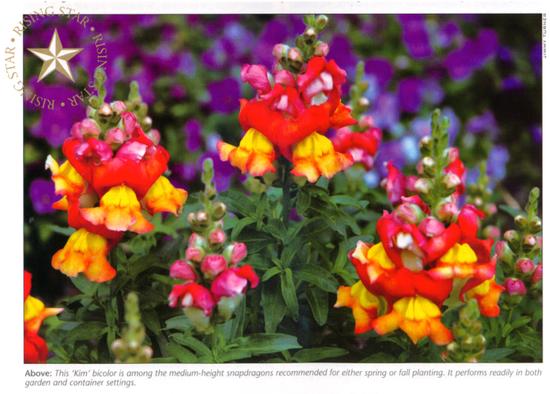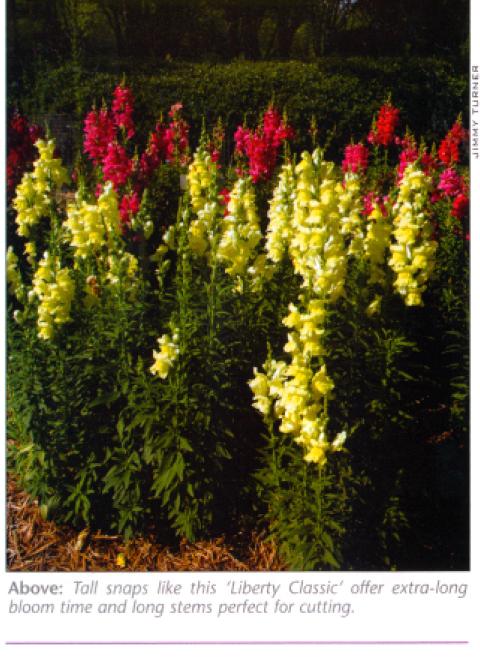Printed at http://www.dallasplanttrials.org/index.cfm/
Put Snap in Your Garden!
Pick the right variety, plant at the right time and grow fabulous snapdragons
Variety review of Snapdragons
We Texans love nothing bener than to regale listeners with tales of our blast-furnace summer; seldom do we praise our mild wimers. Few parrs of the nation can garden year 'round like we can and, even though we can have color in winter, not many of us venture past pansies, violas, and perhaps dianthus. One of my favorites, the elossic snapdragon, is often forgotten.
I think too many bad experiences with poor cultivar choices have led gardeners co believe that snapdragons don't perform well. Nor all snapdragon series are created equal; some perform better in containers and others in the garden. In addition, performance varies by series depending on the time of the year they are planted. To compound the problem, commercial growers and breeders have s-elected variecies that look and grow best in a 4" pot, bur that doesn't necessarily guarantee they will perform well once you get them home. Read on for the best varieties to use in your yard. I'd like to excite you to the possibilities of using some snapdragons this year.
General Description
There are few people who can't identify a snapdragon. Their unique flower shape and frequent use as a cut flower make them a familiar plant. The common name "snapdragon" comes from the flower shape which will open its "mouth" or "snap.'' Showing kids how the flower will snap if squeezed on boch sides is a sure way to get them involved in gardening. Be careful though - you might come home to find whole plants stripped of blooms! This unique flower shape evolved to aid pollination. When the bumblebee steps on the bottom petal, the flower opens and "snaps," depositing pollen on the bee's back.
Click on the PDF below to read the entire article.


